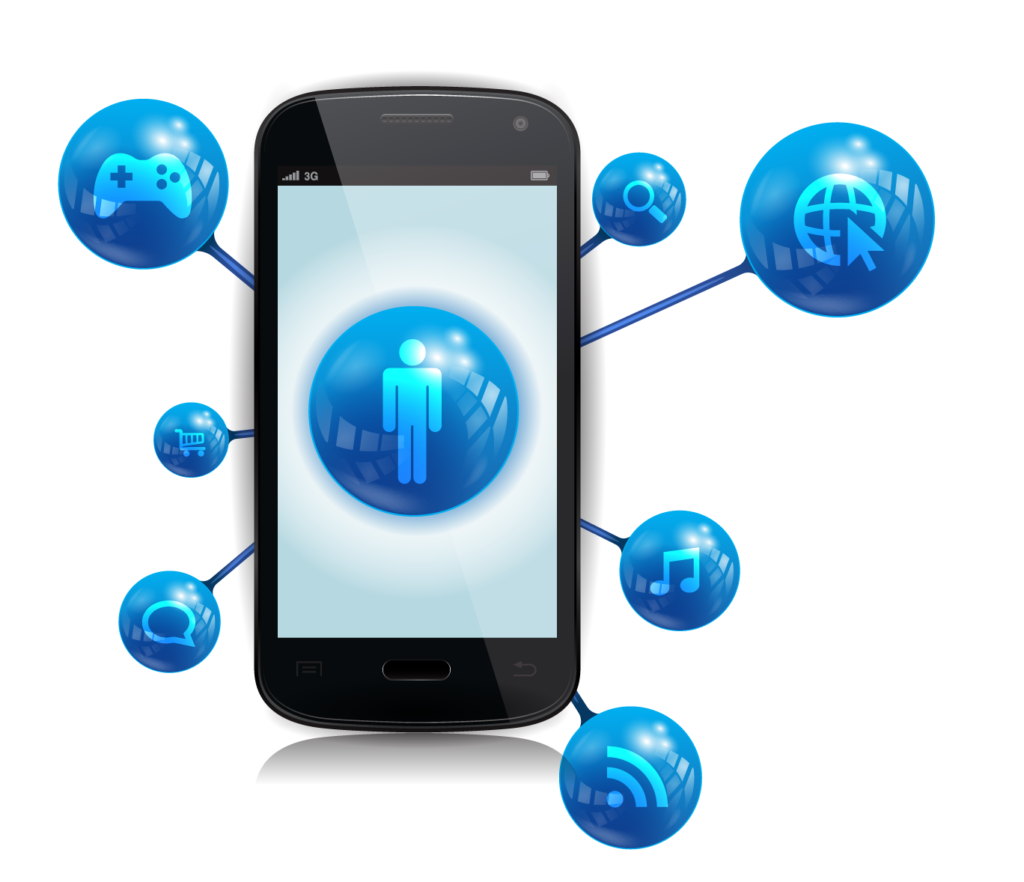
The software market is booming, and at the forefront of this growth is the ever popular Software as a Service industry.
In this blog post I would like to talk about Software as a Service (SAAS) applications,how to build them and how to market them so you can acquire customers in an economical way.
So what is SAAS?
SAAS stands for Software as a Service. It’s a way of delivering software to users over the internet instead of installing it on a local computer.
Think of it like renting an apartment instead of buying a house. With SAAS,the person subscribes to a service and accesses the software through a web browser or app, rather than buying and installing the software on their computer.
Here are some of the benefits of having a SAAS company:
Recurring Revenue: SAAS businesses typically follow a subscription model, meaning customers pay a recurring monthly fee to access your software. This creates a predictable revenue stream, which is attractive to investors.
Lower Costs: There are fewer upfront costs associated with SAAS compared to traditional software models. Customers don’t need to buy expensive licenses or install software on their own devices. You, as the SAAS provider, also don’t have to deliver physical products to the end consumer or deal with individual customer installations.
Scalability: SAAS products are cloud-based, which means they can easily be scaled up to meet customer demand. This allows you to grow your business quickly without having to invest in a lot of new infrastructure.
Accessibility: SAAS products can be accessed from anywhere with an internet connection. This makes them ideal for businesses of all sizes, from small startups to large enterprises.
Automatic Updates: Since the software is delivered through the cloud, you can easily push out updates and new features to all of your customers all at once. This ensures that everyone is always using the latest version of your software product.
Here are a few examples of successful SAAS companies:
ClickFunnels – Non-VC-backed tech startup that grew from $0 to $100 million dollars in just 3 years. ClickFunnels is the category king when it comes to funnel builders.
Salesforce – A behemoth in the CRM (Customer Relationship Management) software space, Salesforce offers a comprehensive suite of tools for managing customer interactions, sales pipelines & marketing campaigns.
Shopify – Shopify is ecommerce software that allows businesses to easily set up and manage their online stores.
HubSpot – HubSpot offers an all-in-one marketing platform that includes software tools for social media marketing, content management, SEO, and web analytics.
Slack – A popular communication platform used by businesses of all sizes for team messaging, file sharing, and video conferencing.
Zoom – This company rose to prominence during the COVID-19 pandemic and is a popular video conferencing platform used by businesses small and large.
Building a successful SAAS application involves several important steps.
The steps are,planning,development,deployment & ongoing maintenance.
Here’s a simplified breakdown of the process to get you started:
-
-
Validate your Idea: Before diving into development, confirm there’s a market need for your SAAS app. Conduct extensive market research to identify potential customers and their problems. Analyze your competitor’s SAAS products to understand what benefits and features are already available and how you can differentiate yours.
-
Planning & Design: Here you define your app’s core functionalities, target audience, and business model. This includes crafting a user-friendly interface (UI) and a smooth user experience (UX). Tools like user personas and storyboarding can help visualize your app’s functionalities from a user’s perspective.
-
Development: This is where the technical magic happens. Choose a technology stack (programming language and framework) that aligns with your app’s needs. Popular options include Javascript frameworks like React for creating user interfaces (UI) and Django for creating the backend of your app. Security and scalability should be major considerations during this phase.
-
-
Deployment and Launch: Once your app is built, it’s time to deploy it on a reliable cloud hosting platform. Popular cloud services include Amazon Web Services (AWS), Google Cloud Platform (GCP), and Microsoft Azure. Finally, launch your app and make it accessible to your target audience.
-
Maintenance: SAAS applications are rarely finished products. Gather user feedback and suggestions for improvement to make your app better. Stay up to date on the latest web technologies and security best practices as well.
Here are some additional resources that you might find helpful:
- A comprehensive guide on SAAS development: https://clockwise.software/blog/how-to-create-saas-application/
- Tips for building your first SAAS app: https://www.freecodecamp.org/news/how-to-build-your-first-saas/
Here are a few tools to help you build your SAAS app:
React – React is a JavaScript library for creating user interfaces. The user interface is basically the buttons,images and text that make up the frontend of your application.
Next.js – With Next.js you can create high-quality web apps harnessing the power of React components.
Django – Django is a framework written in Python that enables rapid development of secure and maintainable websites. One of my favorite backend frameworks plus their documentation is second to none!
To build your SAAS application you need to pick out a tech stack. A tech stack is a set of tools,programming languages and frameworks you use to create your SAAS app,mobile app or any kind of website you can think of.
A tech stack consists of a frontend (client side) and a backend (server side).
Both work together to create a tech stack.
Here are a few popular tech stacks for building web applications:
- LAMP: This is a classic stack that’s been around for a long time. It stands for Linux, Apache, MySQL, and PHP. It’s a good option for building basic web applications.
- MEAN: This stack is all about JavaScript. It stands for MongoDB (database), Express.js (web framework), Angular (front-end framework), and Node.js (JavaScript runtime environment). It’s a popular choice for building modern web applications.
- MERN: This stack is similar to MEAN, but it uses React instead of Angular for the front-end framework. React is another popular JavaScript library for building user interfaces.
- MEVN: This stack is yet another variation on the MEAN stack, but it uses Vue.js instead of Angular or React for the front-end framework. Vue.js is another popular JavaScript library for building user interfaces.
These are just a few examples, and there are many other tech stacks out there. The best tech stack for a particular software project will depend on the specific needs of that project. Some factors to consider when choosing a tech stack include:
- The type of application you’re building (web, mobile, desktop, etc.)
- The size and scale of your application
- The skills of your development team
- Your budget
Lets talk about how to grow your SAAS company extremely fast and acquire millions of users and dollars in revenue leveraging the power of growth hacking!
What is Growth Hacking?
Growth hacking for SAAS companies and startups is about finding creative and cost efficient ways to acquire and retain customers.
Here are a few growth hacks to consider:
Focus on Customer Acquisition:
- Target the right audience: Figure out who your ideal customer is and tailor your marketing efforts to reach them.
- Content is king: Create valuable content (blog posts,articles,videos) that addresses your target audience’s pain points and establishes you as an authority in your niche.
- Leverage free trials and freemium models: Let users experience the value of your product firsthand.
Product-Led Growth:
- Make it easy to use: Minimize signup friction and provide a simple and easy onboarding experience.
- Showcase product value: Provide user guides and demos to highlight your product’s core features and benefits.
- Drive user engagement: Gamification and referral programs can incentivize users and help you get more signups for your SAAS product!
Other Growth Hacks:
- Referral programs: Encourage existing customers to refer new users by offering them rewards or discounts.
- Search Engine Optimization: Optimize your website and content to rank high on the major search engines like Google & Bing.
- Social media marketing: Build a strong social media presence and engage with your target audience.
- Public reviews: Encourage satisfied customers to leave positive reviews on relevant platforms.
Remember:
- Track and Analyze: Continuously monitor your efforts and adapt your strategies based on data and user feedback.
- Experiment: Don’t be afraid to try new things and see what works best for your specific audience and product.
By executing these growth hacks and focusing on providing value to your customers, you can effectively scale your SAAS company.
As a SAAS owner, keeping track of your key performance indicators (KPIs) is crucial for understanding your business health and making informed decisions.
Here are some of the most important business metrics to track:
Customer Acquisition Cost (CAC): Tracks how much it costs to acquire a new customer.
Monthly Recurring Revenue (MRR): How much income you generate monthly from subscriptions.
Customer Lifetime Value (CLV): Predicts the total revenue a customer is expected to generate over their relationship with your business.
Churn: Measures the amount of recurring revenue lost due to cancellations.
Product Signups: Tracks how many visitors are interested enough to create an account.
Qualified Lead Velocity Rate (LVR): Measures the speed at which qualified leads are generated.
Conversion Rate to Customer: Shows what percentage of qualified leads become paying customers.
Average Revenue Per Account (ARPA): Indicates the average monthly revenue you generate from each customer.
Net Promoter Score (NPS): Measures customer satisfaction and loyalty.
Number of Support Tickets Created: Tracks how frequently customers are encountering issues.
Average First Response Time & Average Resolution Time: Measures your customer support team’s efficiency.
Remember, the most important metrics will vary depending on your specific business goals.
However, by tracking these core metrics, you’ll gain valuable insights into how well your SAAS is performing so you can identify areas for improvement.
Have you ever considered building a SAAS app?
What challenges do you think you might face?
Share your thoughts and experiences in the comments below!



